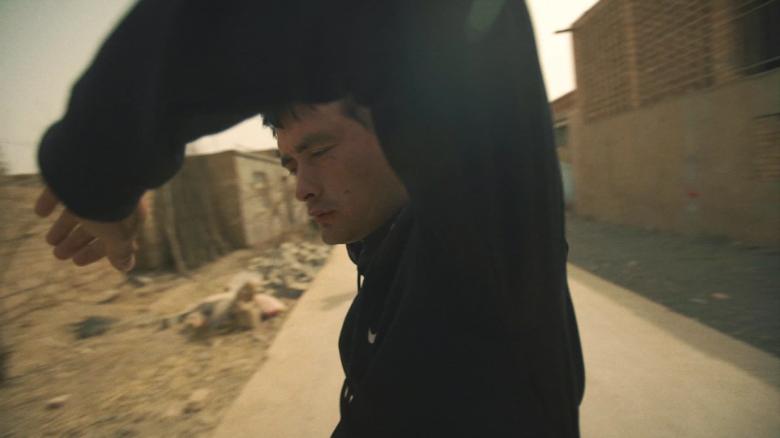(CNN)As US President Donald Trump signed a bill into law Wednesday that aims to punish Beijing for its repression of the Uyghur ethnic minority, he was accused by his former national security adviser of endorsing China's construction of internment camps in its western region of Xinjiang.
According to an excerpt from John Bolton's forthcoming book published in The Wall Street Journal, Trump told Chinese President Xi Jinping over dinner last year that Xi should "go ahead with building the camps," which Trump thought was "exactly the right thing to do."
Trump's alleged remarks are in stark contrast to the official position advocated by his administration, which has repeatedly challenged Beijing over it repressive policies in Xinjiang.
Last July, Secretary of State Mike Pompeo went so far as to publicly label China's treatment of Uyghurs as the "stain of the century."
Here's what you need to know about Xinjiang and what's been going on there.
Where is Xinjiang and who lives there?
Xinjiang, officially named the Xinjiang Uyghur Autonomous Region, is a remote region in China's far west.
It is home to about 11 million Uyghurs, a predominantly Muslim ethnic minority that speak a language closely related to Turkish and have their own distinct culture.
Rich in natural resources, especially oil and natural gas, the region has seen a large-scale influx of the country's majority Han population in recent decades, amid a concerted effort by the government to develop the region's economy.
Historically, Uyghurs had been the majority in the region. Now, they account for just under half of Xinjiang's total population, and many of them live in the southern, rural part of the region.
Xinjiang is also geographically strategic for Beijing. It is China's gateway to Central Asia, bordering Kazakhstan, Kyrgyzstan, Tajikistan and Afghanistan, as well as Mongolia and Russia in the north and Pakistan and India in the south.
What is happening there?
The US State Department estimates that more than one million Uyghurs, as well as members from other Muslim minority groups, have been detained in a sprawling network of internment camps in Xinjiang, where they are reportedly "subjected to torture, cruel and inhumane treatment such as physical and sexual abuse, forced labor, and death."
Former detainees have told CNN they experienced political indoctrination and abuse inside the camps, such as food and sleep deprivation and forced injections.
Initially, Beijing flatly denied the existence of the camps. But it later claimed the facilities are voluntary "vocational training centers" where people learn job skills, Chinese language and laws. The government now insists that the camps are necessary for preventing religious extremism and terrorism.
Leaked Chinese government documents, however, revealed people can be sent to a detention facility for simply "wearing a veil" or growing "a long beard."
The documents, together with other first-hand reports, paint an alarming picture of what appears to be a strategic campaign by Beijing to strip Uyghurs of their cultural and religious identity and suppress behavior considered to be unpatriotic.
The Chinese government has challenged the authenticity of leaked records.
The suppression of Uyghurs in Xinjiang has also seen an increase in mass surveillance throughout the region.
When CNN traveled through Xinjiang in 2019, there were surveillance cameras about every 150 feet, monitoring people's faces and daily routines. Mobile police checkpoints popped up at random throughout the region, leading to long lines on public roads. At the checkpoints, and sometimes randomly on the street, police officers stopped people to ask for their ID cards and occasionally demanded to plug unidentified electronic devices into cellphones to scan them without explanation.
What's the back story?
Beijing's crackdown on Xinjiang echoes a longtime paranoia about the frontier region and a deep suspicion of its non-Han population among China's rulers, which have historically resulted in oppression and rebellion.
While Chinese armies rampaged through what is now Xinjiang and controlled parts of it for centuries, the modern administrative unit only dates to the mid-nineteenth century, a fact hinted at by its name, which translates as "new frontier" in Chinese.
In the 1930s and 40s, Xinjiang experienced brief periods of partial independence, when two breakaway East Turkestan Republics were declared and swiftly put down.
Today, Uyghur activists pushing for Xinjiang to become a separate country still call it "East Turkestan."
Over the past decade, the Chinese government has tightened its grip on the region, following incidents of violent ethnic unrest. The turning point came in 2009, when ethnic riots rampaged through Urumqi, the regional capital, killing at least 197 people.
Beijing has blamed Islamist militants and separatists for the violent attacks. But Uyghur activists and rights groups claim that Beijing's repression of religious freedom and unfair ethnic policies is at the root of the conflicts.
Uyghurs and other minorities in Xinjiang have long complained of discrimination in employment and education, and corruption is rife within state-controlled industries that continue to dominate the local economy.
In 2014, Ilham Tohti, a Beijing-based economics professor who was considered one of the leading moderate Chinese voices on Xinjiang, was jailed for life for "separatism" and spreading "ethnic hatred."






